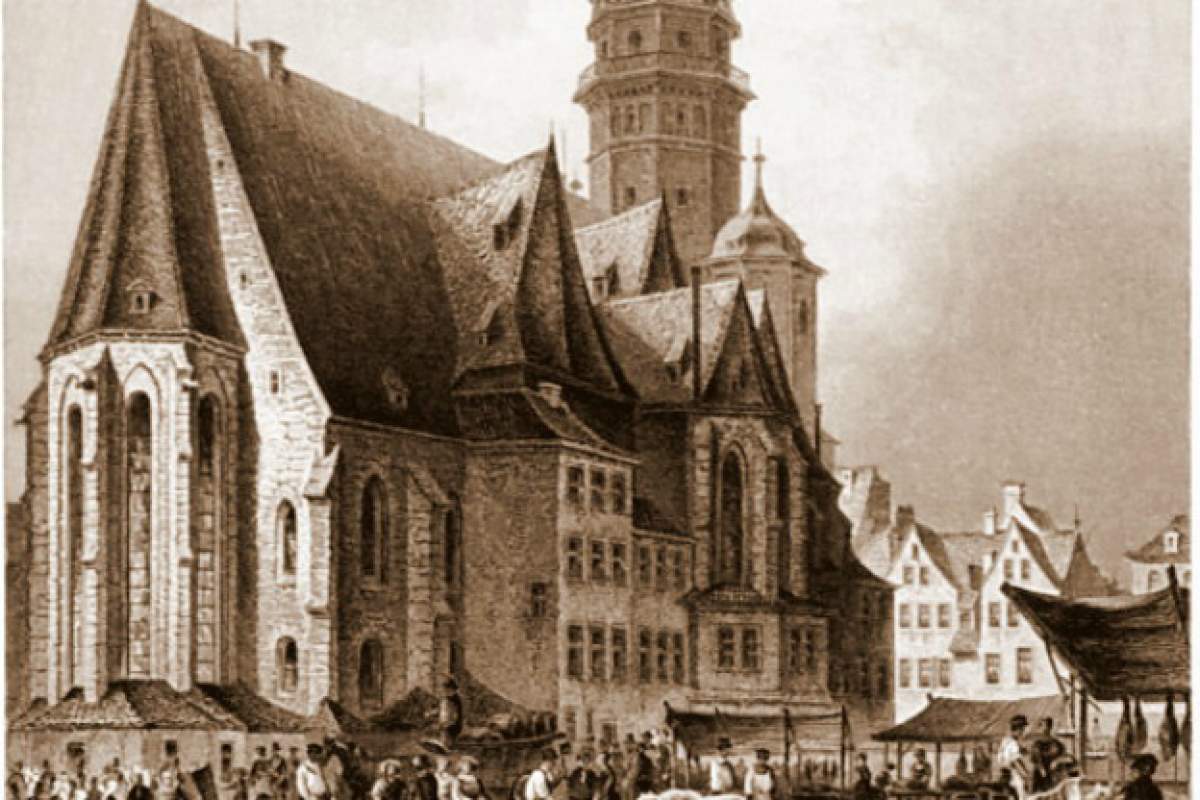
There are a couple of new recordings of Bach’s St. John Passion. The first by the Portland Baroque Orchestra led by Monica Huggett, was released on the Avie label in 2011. The other, performed by La Petite Bande under the direction of Sigiswald Kuijken, will be released from Challenge Records in September, 2012.
Smaller forces
La Petite Bande and the Portland Baroque Orchestra both perform the work with scaled-down ensembles creating a sound texture more akin to a chamber cantata. Both recordings aim to reflect the resources available to Bach while working in Leipzig in 1724, early in his tenure as director of music at the city’s principal churches.
Versions of the Passion
Bach put his Saint John Passion through a complicated series of revisions and alterations: during his lifetime, there were four different performances, each time with new modifications. These multiple versions, lost parts, and the incomplete transmission of the piece since Bach’s time, have created grey areas in determining the truth about how it might have been originally conceived. As Kuijken puts it, the passion “continues to have elements reminiscent of a detective novel” and certain details may never fully be clarified.
There are many alternate outcomes to this detective work, and drawing on recent research both ensembles end up offering something completely different. In the continuo section, Portland Baroque employs both harpsichord and organ throughout, often adding a bassoon as well. But the Belgian ensemble uses organ exclusively and avoids the bassoon altogether. In the liner notes Kuijken explains, “these days the [bassoon] is mostly included whenever the oboes play…It is thus commonly thought that this was always the case, a point that I definitely dispute.” Portland Baroque comes down on the other side: since a movement in at least one version of the passion actually includes a written out bassoon part, for them, it’s a fair assumption to have the bassoon join the continuo for other sections as well.
Instrumentation
One of the most striking differences in instrumentation between these recordings is that Portland performs the Passion without flutes. One of the places we normally hear the flute in Saint John is in the aria Zerfliesse, mein Herze, where the flute is paired with an oboe da caccia. But taking a cue from the research of Pieter Dirksen who has suggested that Bach didn’t have flutes in mind when he wrote his first version of the Passion, Portland Baroque keeps the oboe da caccia, but replaces the flutes with a treble oboe. It’s certainly an unusual combination since this particular pairing of oboe with oboe da caccia isn’t found in any other Bach arias.









